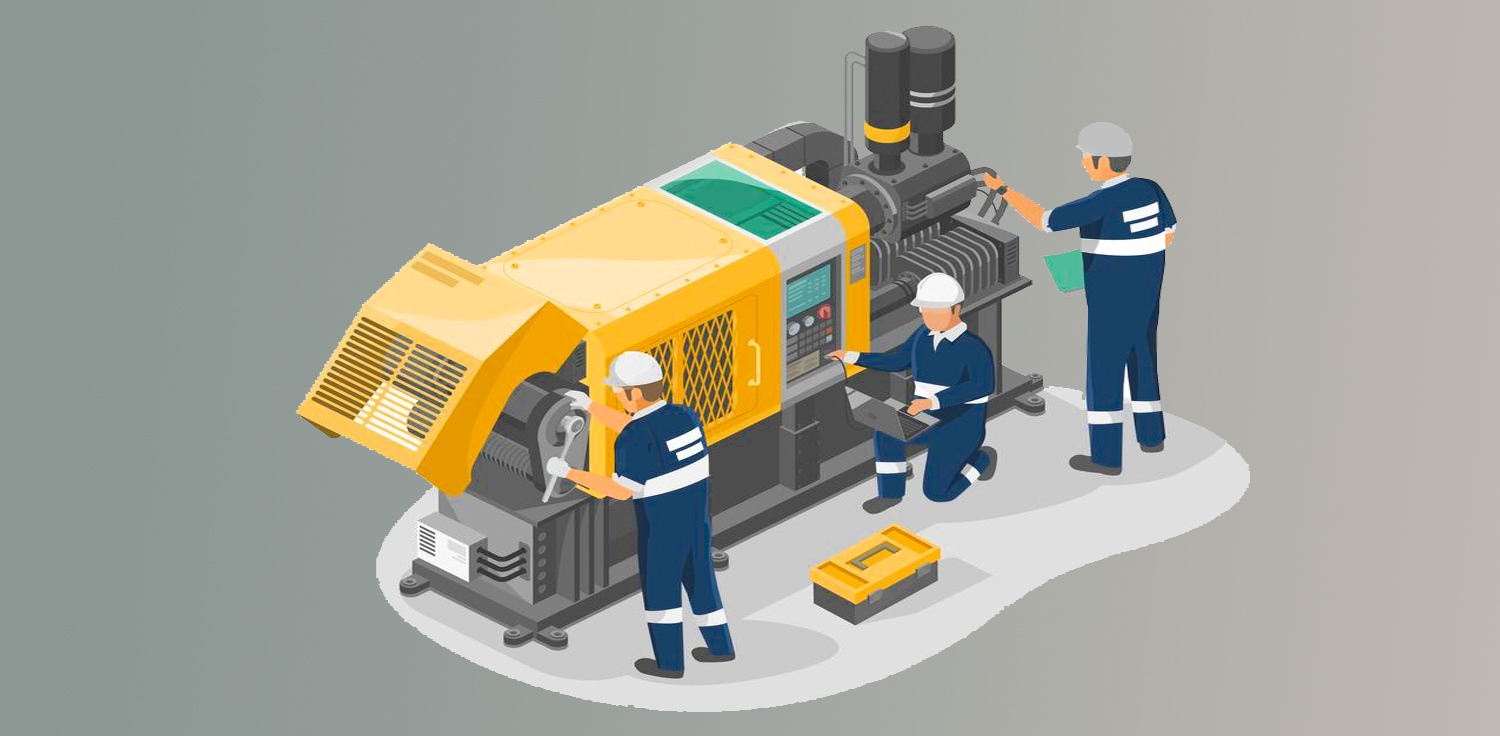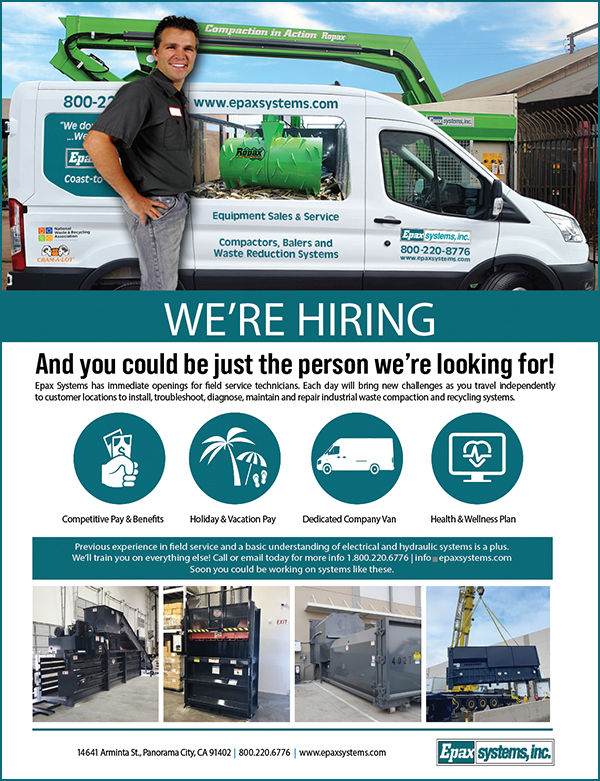Let's Talk Trash!
Who gets passionate about waste management and recycling? WE DO!
And not just how it relates to our equipment. We care about how it affects small businesses, infrastructure, the supply chain, and yes, the environment. So we've built this page to share thoughts, and ideas about waste management is the broadest possible terms.
We'll be adding to it regularly so be sure to bookmark it.

Waste Equipment in Supply Chain

How does waste and recycling equipment fit in the supply chain?
October 23, 2023
Waste and recycling equipment plays a crucial role in the supply chain, particularly in industries that generate substantial waste and are committed to environmental sustainability. This equipment helps manage, process, and recycle waste materials, which is essential for reducing environmental impact, complying with regulations, and improving resource efficiency. Here's how waste and recycling equipment fits into the supply chain:
- Waste Collection: At the beginning of the supply chain, waste and recycling equipment can include waste bins, dumpsters, and compactors used to collect and store various types of waste generated in the production and distribution processes.
- Material Sorting and Separation: Waste sorting equipment, such as conveyor belts, trommels, and magnetic separators, are used to separate different types of waste materials, making recycling more efficient and reducing the need for disposal in landfills.
- Compaction and Storage: Equipment like balers and compactors are used to reduce the volume of waste, making it easier to store, transport, and handle waste materials within the supply chain.
- Recycling: Recycling equipment includes machines that process recyclable materials, like paper, cardboard, plastics, glass, and metals. Examples of recycling equipment are shredders, crushers, and recycling centers that convert waste into reusable resources.
- Waste-to-Energy: Some waste is converted into energy through technologies like incinerators, gasification plants, and anaerobic digesters. These processes require specialized equipment to safely and efficiently generate energy from waste.
- Transportation: Waste and recycling equipment also play a role in the transportation sector. Specialized vehicles such as garbage trucks, recycling trucks, and compactors are used to transport waste and recyclables from collection points to processing facilities or landfills.
- Distribution: Industries with waste and recycling initiatives often integrate eco-friendly packaging and materials into their product distribution. This involves sourcing and incorporating recycled materials into packaging and transportation products.
- Compliance and Reporting: Waste management equipment may include tracking and monitoring systems for regulatory compliance and reporting. These systems help ensure that the supply chain adheres to environmental regulations and reporting requirements.
- Sustainability: The use of waste and recycling equipment supports sustainability goals and can be part of a company's corporate social responsibility initiatives. Proper waste management contributes to a positive brand image and customer satisfaction.
- Cost Reduction: Efficient waste and recycling equipment can help reduce waste disposal costs, optimize resource use, and increase overall operational efficiency within the supply chain.
The integration of waste and recycling equipment in the supply chain is essential for reducing waste, conserving resources, meeting sustainability goals, and complying with environmental regulations. By investing in the proper equipment and processes, businesses can minimize their environmental footprint and reduce costs while contributing to a more sustainable future.
Sustainability - What is it? And why should I care?

Everybody is talking about it, but why?
October 27, 2023
We don't claim to be the world's leading experts on the subject of sustainabilty. And this little essay is just a basic overview. But we think it's important to address some key points since so many people use sustainability as a buzzword, but never really step back and describe what it is.
Sustainability is the concept of living in balance with the natural environment and ensuring that the resources we consume are replenished for future generations. It encompasses various aspects, including environmental, social, and economic considerations. Environmental sustainability focuses on conserving natural resources, reducing pollution and waste, and preserving ecosystems. Social sustainability emphasizes promoting equity, inclusivity, and social justice, ensuring people's well-being, and fostering community engagement. Economic sustainability involves developing systems that support long-term economic growth while minimizing negative impacts on the environment and society.
It is crucial to care about sustainability because it directly affects our quality of life and that of future generations. By embracing sustainability, we actively promote a healthier environment, which is essential for clean air, water, and food. Additionally, sustainable practices help mitigate the effects of climate change, such as rising sea levels and extreme weather events. Caring about sustainability also means prioritizing social equity and inclusivity, ensuring that all individuals have equal access to resources and opportunities. By addressing social issues and reducing inequality, we create a more just and harmonious society.
Moreover, sustainability is closely intertwined with economic stability and long-term prosperity. By adopting sustainable practices, businesses can reduce costs, improve efficiency, and enhance their reputation among consumers who prioritize environmentally and socially responsible companies. Sustainable economic growth also means considering the well-being of future generations by using resources responsibly and investing in renewable and clean energy. By caring about sustainability, we contribute to the creation of a resilient and thriving economy that considers the long-term consequences of our actions.
Sustainability is a vital concept that encompasses environmental, social, and economic aspects. Caring about sustainability ensures a healthier environment, promotes social equity, and stimulates long-term economic growth. By adopting sustainable practices in our daily lives, businesses, and governments, we can preserve resources and foster a better future for ourselves and generations to come. Ultimately, sustainability is about recognizing our responsibility to maintain a balance between our needs and the well-being of our planet and its inhabitants.
The Importance of Preventative Maintenance

Is it worth the recurring cost?
October 27, 2023
Preventative maintenance on industrial equipment is critically important to ensure proper equipment operation, reliable uptime and to avoid costly repairs. By developing and implementing a regular maintenance schedule, companies can identify and address potential issues before they become major problems. This proactive approach helps to minimize downtime, increase productivity, and reduce safety risks.
Regular inspection, cleaning, and lubrication of equipment can help identify worn-out or damaged parts that need to be repaired or replaced. By addressing these issues promptly, businesses can avoid sudden breakdowns that can halt operations and result in costly repairs. For example, by regularly inspecting the belts and motors, checking hydraulic fluids, engine oil, and structural components of equipment, any signs of wear or damage can be identified and resolved early on, preventing a costly or even irreparable breakdown.
PM service also ensures that equipment performs optimally. Regularly servicing machines and correcting any deviations or inefficiencies can help enhance their efficiency and productivity. Cleaning air filters, calibrating sensors, and ensuring proper alignment of mechanical components are just a few examples of maintenance tasks that can improve equipment performance. Furthermore, preventative maintenance plays a vital role in ensuring workplace safety. Faulty equipment can lead to accidents, injuries, or even fatalities. Regular inspections, testing, and maintenance procedures can help identify and rectify potential safety hazards. For instance, ensuring that emergency stop buttons are fully functional, confirming the integrity of safety shields, and monitoring the condition of electrical cables can prevent accidents and create a safe working environment.
By implementing a preventative maintenance program, companies can enhance productivity, reduce downtime, and save on repair and replacement costs, ultimately promoting the overall efficiency and profitability of their operations.













